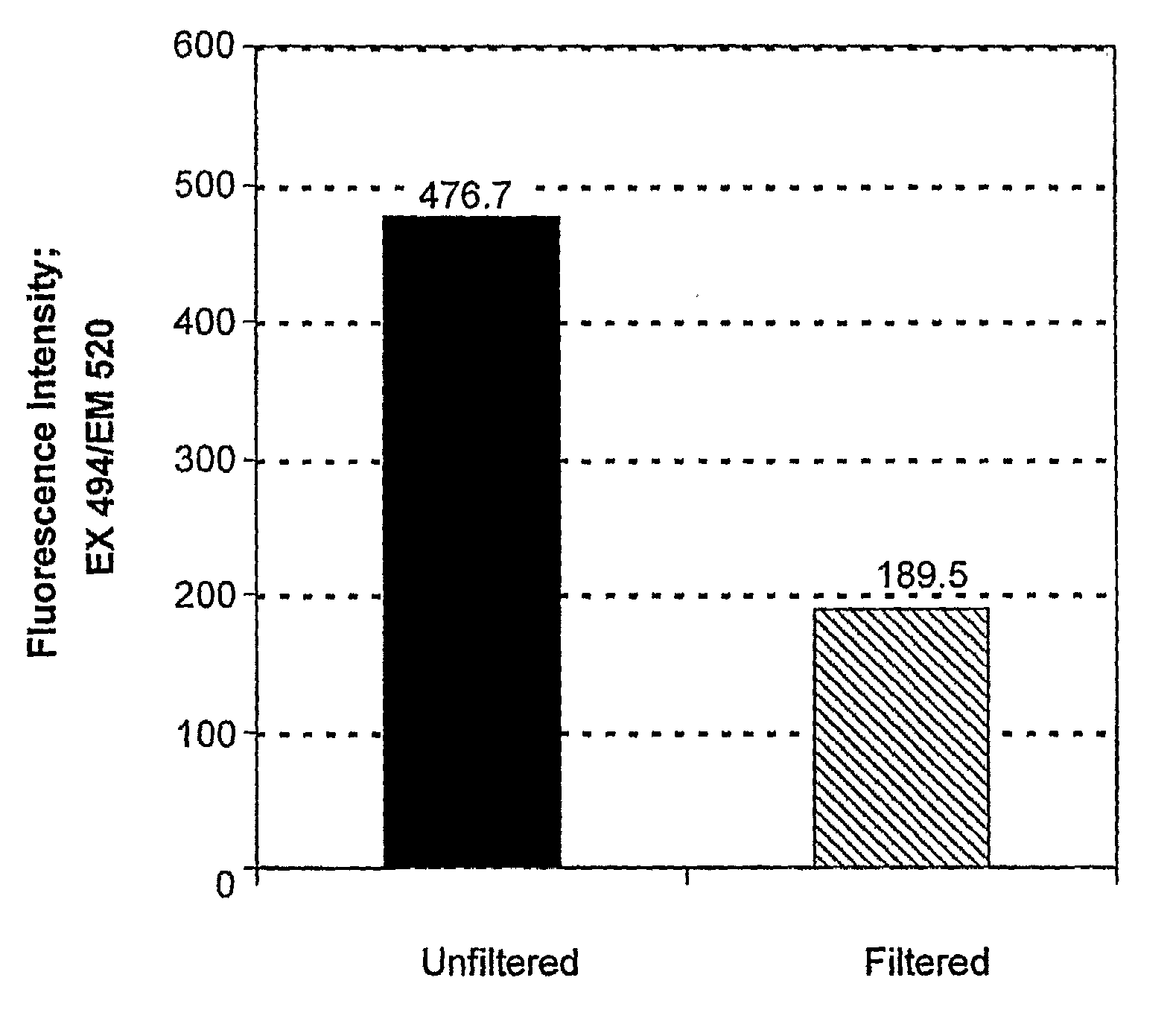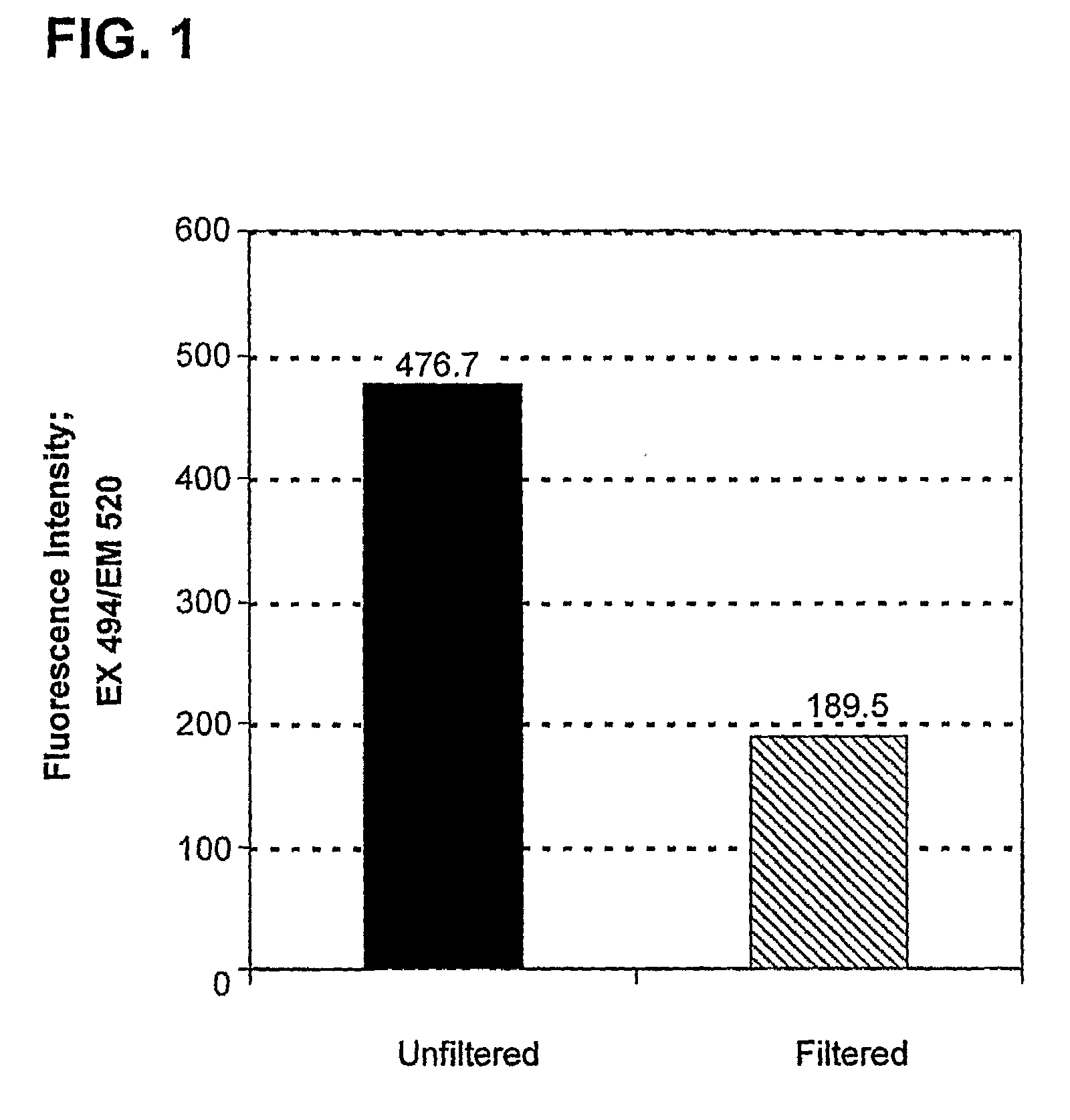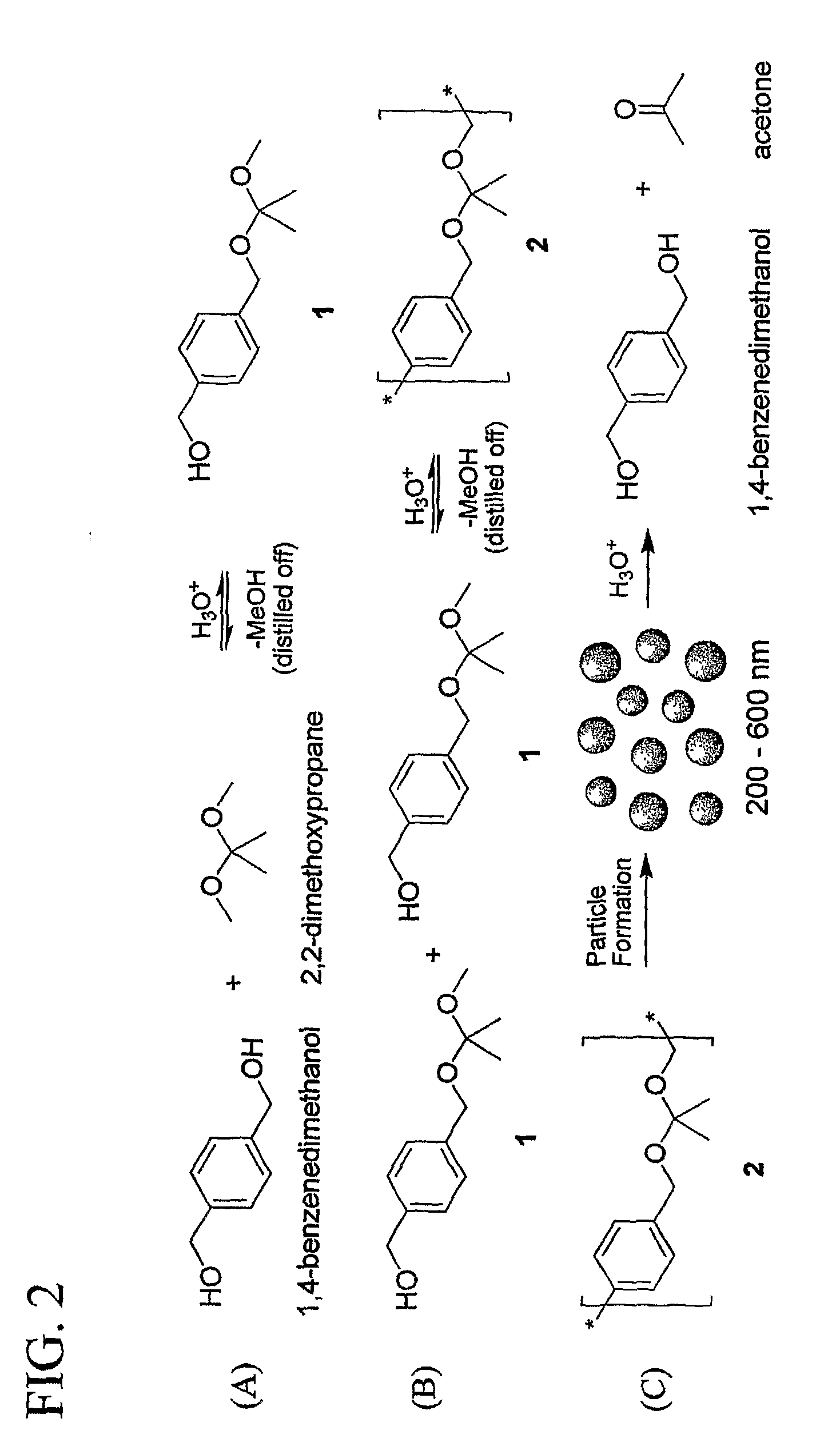Novel strategies for delivery of active agents using micelles and particles
a technology of micelles and active agents, applied in the direction of peptide/protein ingredients, depsipeptides, dna/rna fragmentation, etc., can solve the problem of limiting the immune pathology caused by allergies, sepsis like symptoms, transplant rejection, etc., and the scientific rationale of how these vaccines stimulate such effective immunity cannot be explained. , to achieve the effect of reducing the chance of protein destruction of the encapsulated, fast cross
- Summary
- Abstract
- Description
- Claims
- Application Information
AI Technical Summary
Benefits of technology
Problems solved by technology
Method used
Image
Examples
example 1
Synthesis of Antigen Containing Crosslinked Micelles
[0117]Crosslinked micelles that contain the protein antigen Ovalbumin and immunostimulatory DNA were synthesized in a two step process. First, micelles were formed between the cationic block copolymer, PEG-polylysine-thiopyridal and negatively charged FITC-Ovalbumin (FITC-OVA) and immunostimulatory DNA (ISS-DNA). These micelles contained a 10 mg / ml concentration of PEG-polylysine-thiopyridal, a 0.5 mg / n31 concentration of FITC-OVA and a 0.5 mg / ml concentration of ISS-DNA. The micelles were allowed to form for one hour and were then crosslinked with 0.4 mg / ml of dithio-ethylene glycol. The crosslinking reaction was monitored by U.V. activity (342 nm), and indicated that the thiopyridal groups had been quantitatively reacted after 1 hour at room temperature. The encapsulation efficiency of FITC-OVA in the micelles was determined by centrifuging the micelles through a 100 kD spin-filter (centricon) and analyzing the recovered solution...
example 2
Synthesis of Polyketal Particles
Single Emulsion Method for Delivery of Hydrophobic Drugs
[0118]Particles were synthesized with, poly(1,4-phenylene-acetone dimethylene ketal) using an oil-in-water emulsion method. Briefly, 10 mg of 2, 1 mg of the ERK inhibitor UO126 and 0.1 g of chloro-methyl fluorescein diacetate (CMFDA), were dissolved in 0.5 mL of CHCl3 (with 0.1% triethylamine). This solution was then added to 5 mL of pH 9 buffer (10 mM NaHCO3) containing 2 mg / ml polyvinyl alcohol (PVA, 31-50 kDa, Aldrich). The oil-water mixture was shaken briefly and then sonicated for 2 to 3 min at 40 watts (Branson Sonifier 250) to form a fine oil / water emulsion. The emulsion was stirred under N2 flow for at least 3 h to evaporate the solvent and produce a particle suspension. Particle sizes were analyzed by dynamic light scattering (DLS) and indicated that the average diameter was 282 nm.
example 3
Synthesis of Polyketal Particles
Double Emulsion Method for Synthesis of Hydrophilic Drugs
[0119]Polyketal particles (PKNs) containing FITC-ovalbumin were fabricated using a double emulsion method. First, 20 mg of poly(1,4-phenylene acetone dimethylene ketal) (PPADK) dissolved in 500 μL of chloroform was added to 100 μL of FITC-Ova solution (˜0.7 mg). This mixture was sonicated at 40 watts for 1 minute to form the primary emulsion. Next, 5 mL of 0.2% w / v polyvinyl alcohol (PVA, Aldrich) in 10 mM pH 9 sodium phosphate buffer was added, and this mixture was sonicated at 40 watts for at least 1 minute to form the secondary emulsion. The emulsion was mixed under nitrogen ventilation for 4 hours, after which the volume was made up to 5 mL, with buffer. Two batches of PKNs containing FITC-Ova were prepared in this manner, as well as two batches of plain PKNs (without FITC-Ova). The PKN suspensions were stored at 4° C. Particle sizing was determined by dynamic light scattering (DLS). The two...
PUM
| Property | Measurement | Unit |
|---|---|---|
| size | aaaaa | aaaaa |
| size | aaaaa | aaaaa |
| particle size | aaaaa | aaaaa |
Abstract
Description
Claims
Application Information
 Login to View More
Login to View More - R&D
- Intellectual Property
- Life Sciences
- Materials
- Tech Scout
- Unparalleled Data Quality
- Higher Quality Content
- 60% Fewer Hallucinations
Browse by: Latest US Patents, China's latest patents, Technical Efficacy Thesaurus, Application Domain, Technology Topic, Popular Technical Reports.
© 2025 PatSnap. All rights reserved.Legal|Privacy policy|Modern Slavery Act Transparency Statement|Sitemap|About US| Contact US: help@patsnap.com



